The high cost of titanium and the complexity of parts typically made with this material makes traditional manufacturing methods expensive. 3D printing is gaining ground for select applications because it offers significant potential for reducing manufacturing costs, particularly in industries such as aerospace, medical devices, and automotive.
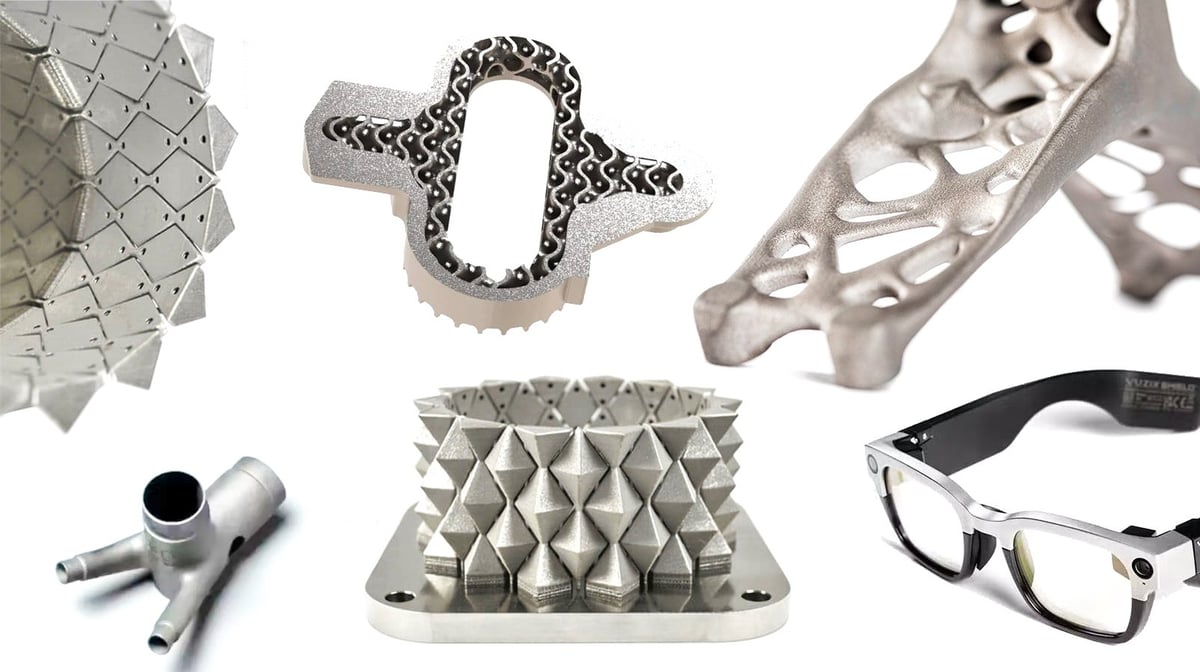
As an additive (as opposed to subtractive) technology, 3D printing generally produces less waste material while parts designed to be 3D printed typically require less material. Manufacturers also save time, energy, and tooling costs with 3D printing. Let’s take a closer look at where titanium 3D printing is today, the machines, the services, and the companies using it.
Services for Titanium We Recommend
If purchasing your own metal printer for titanium parts isn’t feasible, a wide range of third-party 3D printing services offer the material, and some also offer design services. Be sure to inquire which alloy they offer, because pure titanium may need to be specially ordered.
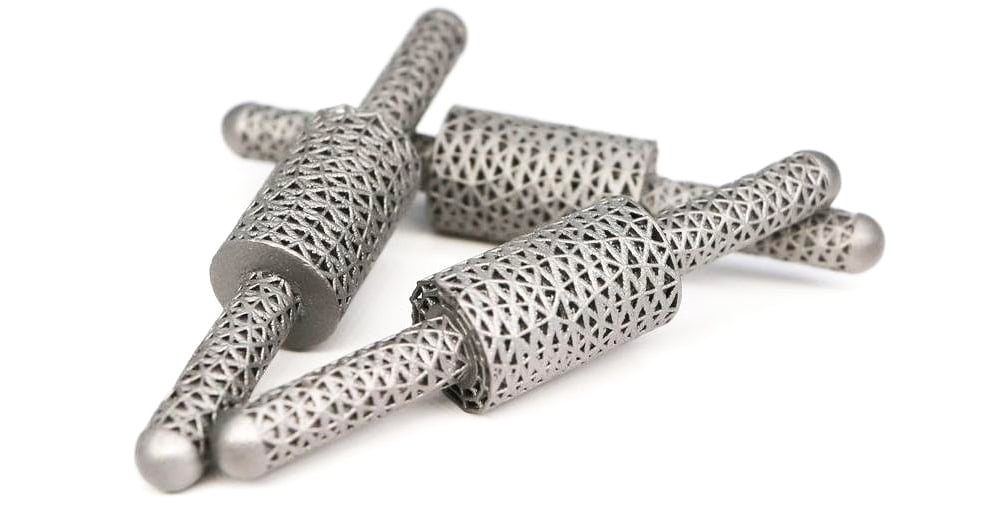
Titanium Medical Parts
The services we feature below are for manufacturing parts. Medical parts are in a class by themselves and handled by specialty services, but most often by established medical device manufacturers. As 3D printed titanium rapidly gains regulatory approval for custom implants, traditional manufacturers, such as Stryker, XimmerBiomet, and Johnson & Johnson are increasingly offering the service. Yet, 3D printing services specializing in titanium implants are also growing.
Specialists in Titanium 3D Printing for Medical Implants:
- Zenith Tecnica
- 4Web Medical
- Camber Spine
- Amnovis
- Nexxt Spine
Craftcloud
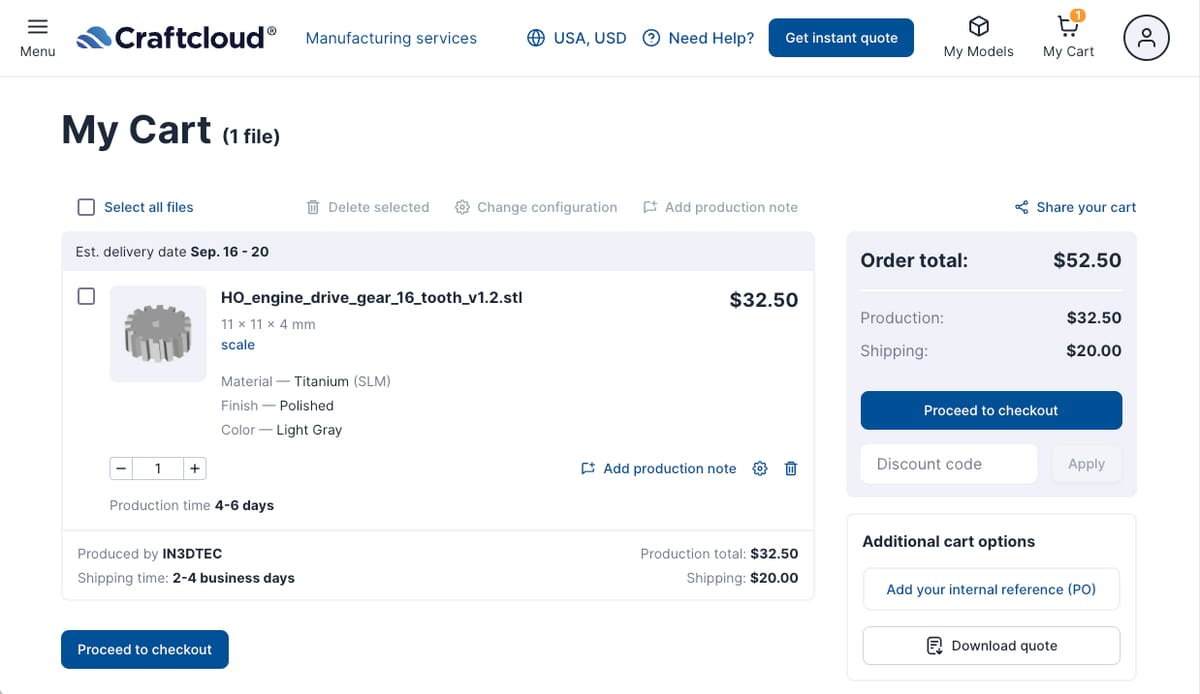
Craftcloud is more than just a 3D printing service. It enables you to compare prices and services from different custom manufacturers and find the right one at the right price.
With over 150 manufacturing partners around the world, Craftcloud presents you with the best services in terms of price and lead time, with no additional fees. Quotes are generated in real time based on your uploaded models and location.
When it comes to titanium 3D printing, Craftcloud has several manufacturing partners with this material capability, offering you a range of titanium grades and alloys for powder bed fusion additive manufacturing and CNCing. There are also several finishes to choose from.
- Titanium (raw, polished, glass blasted, deburred)
- Food Safe Titanium (raw, glass blasted, corundum blasted, deburred, glass & corundum)
- Nickel-Titanium (raw & sandblasted)
- CNC Titanium Ti 6Al 4V
Materialise OnSite
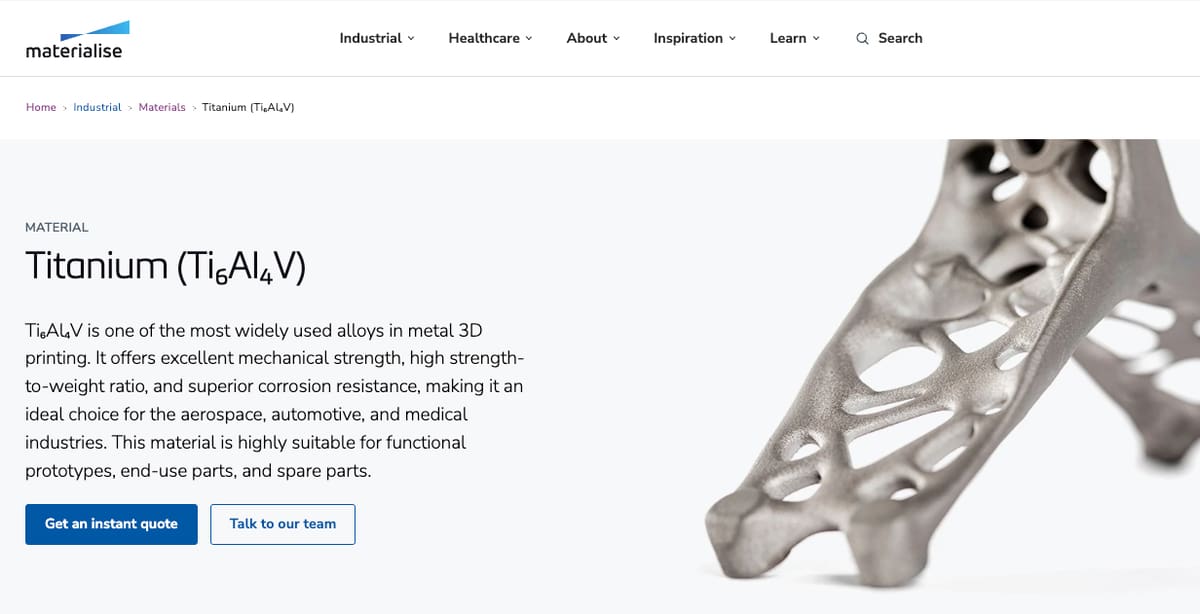
Based in Belgium with a manufacturing facility in Michigan, Materialise is best known for its 3D printing software, yet also offers both a rapid prototyping and on-demand additive manufacturing for volume production. Both options offer metal.
The Materialise portal features an automated check for the 3D printing suitability of your part and optional consultation with engineers. Their services are structured by industry, having set up a department for each major client group, including healthcare, optics, and jewelry.
There are also several business integration solutions, like manufacturing partnerships and white-label integration. This makes it easy for your firm to partner with Materialise to provide parts and services for your customers under your own name.
Materialise offers one titanium alloy (Ti₆Al₄V), which is ideal for functional prototypes and high-performance end-use parts. The maximum part dimensions are 250 x 250 x 305 mm.
Zenith Tecnica
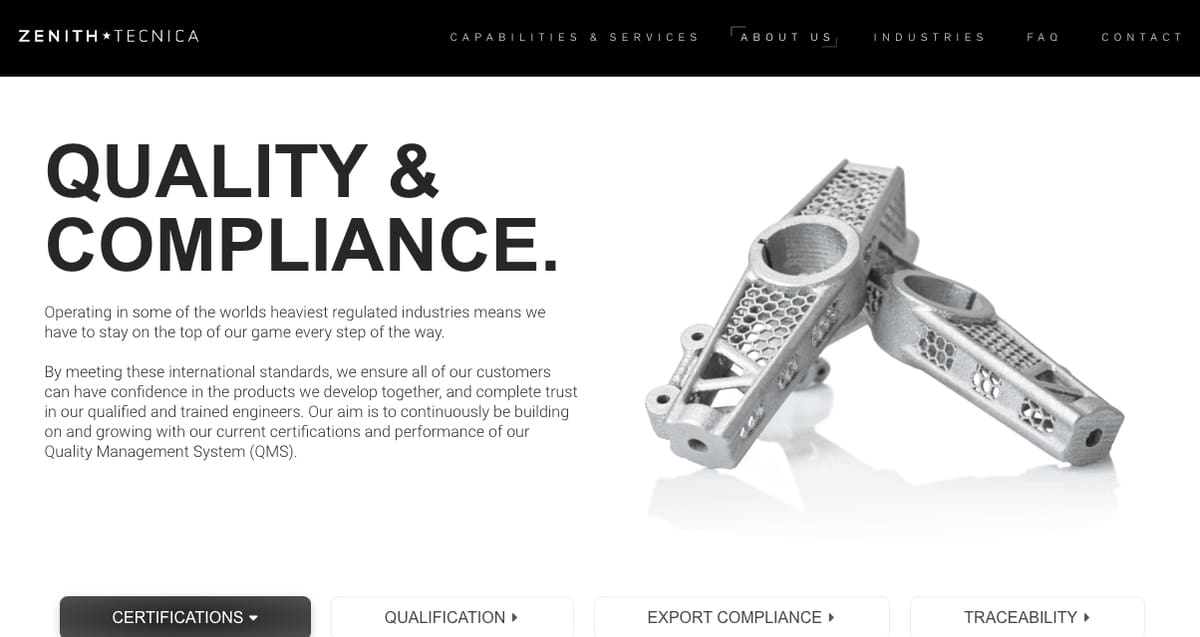
Zenith Tecnica is a titanium specialist. It launched in 2014 with the goal of making titanium accessible through additive manufacturing.
Although located in New Zealand, its parts and services are in demand across the globe. They build a variety of components from satellite parts to medical implants and even high-performance parts for sports syndicates such as America’s Cup Racing and Formula1 teams.
Zenith Tecnica uses a fleet of GE Arcam electron beam melting (EBM) machines. And if you don’t yet have a digital file of the part you have in mind or need to optimize your part for 3D printing, their design team can bring that to fruition.
Because the company offers medical parts they provide a range of process validation, qualification, and certification options.
Its titanium is Ti6Al4V using EBM.
FIT
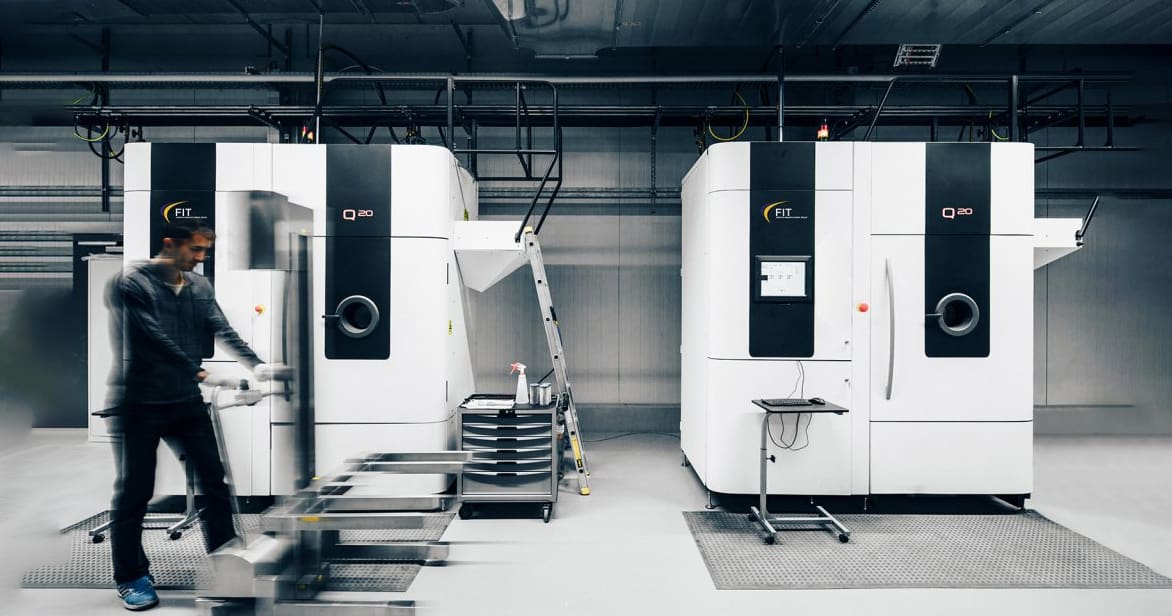
FIT is a German additive manufacturer that’s been delivering custom metal parts and components globally for more than 20 years. They have facilities in the US, Japan, Russia, and Europe.
When it comes to metals, FIT offers a wide range of materials and technologies and several conventional production technologies as well. Together with their development expertise for 3D printed components and their extensive post-processing possibilities, they offer metal additive manufacturing for everything from medical implants and aerospace parts to spare auto parts and sculpture.
For titanium, FIT offers electron beam melting technology with two metal grades.
Addman
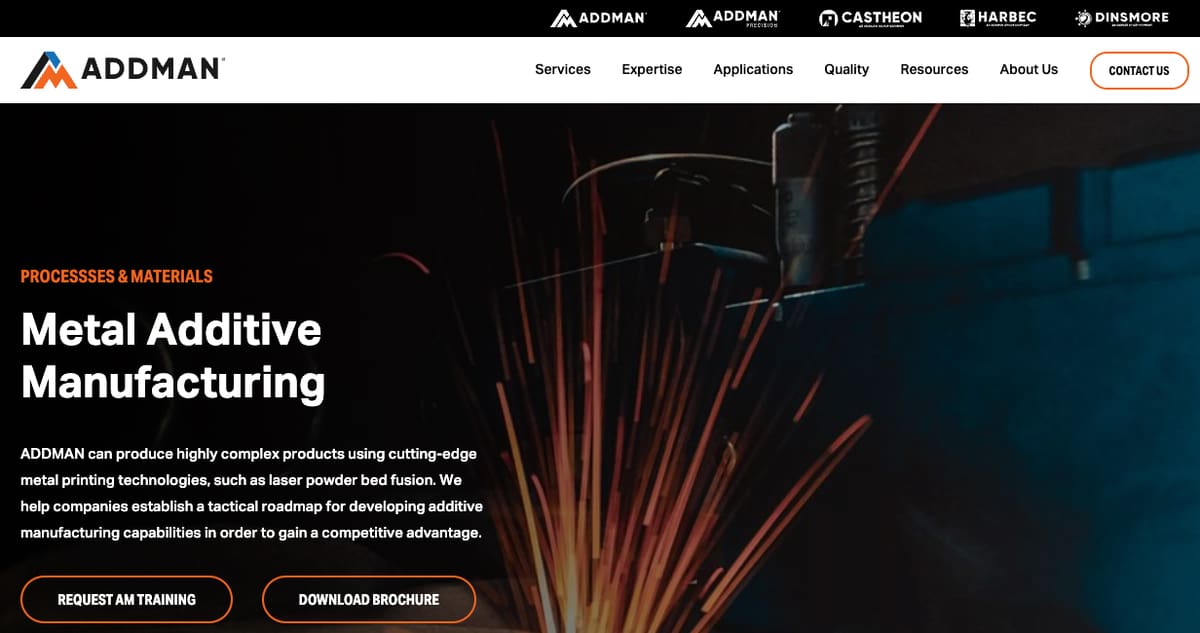
A relative newcomer to 3D printing as a service, Addman, founded in 2020, has quickly grown via acquisition to become the largest metal 3D printing services in the country.
The Florida-based company offers metal and polymer 3D printing, CNC machining, and other post-processing at seven facilities across the US.
When it comes to applications and industries served, Addman says it covers aerospace, medical, energy, and industrial and produces everything from rocket thrusters to tooling to mission-critical hinges.
The company’s metal 3D printing is carried out on an enviable collection of the industry’s top laser powder bed fusion printers, including a Velo3D Sapphire, a collection of EOSs, and machines from 3D Systems, GE Additive, and Renishaw. Engineers on staff can guide you to the right machine, materials, and post-processing for your application.
Protolabs
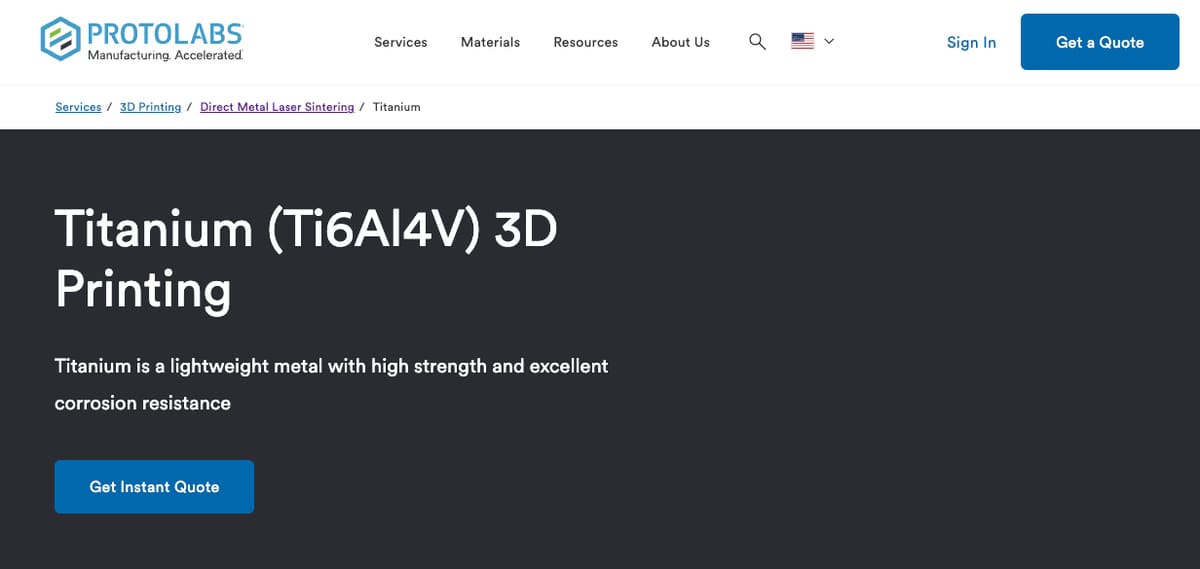
Minnesota-headquartered Protolabs has a digital quoting platform, which provides not only instant quotes but also design analysis — to make sure what you want to print is printable. In Nov. 2023. Protolabs opened a new 120,000-square-foot facility in North Carolina primarily dedicated to metal 3D printing.
Protolabs offers a suite of services around the certification of your part so you feel confident that it will perform as intended, including material traceability, which can be very important in regulated industries. When you receive your metal part you can also get a detailed analysis of the metal powder used and an inspection of the part’s mechanical properties.
For titanium, the company offers Ti6Al4V on powder bed fusion 3D printers from EOS.
Quickparts

Quickparts is a full-service additive manufacturer that grew from printer maker giant 3D Systems. Based in South Carolina, with a global presence, they offer printing and consultation services and can also provide additional services like CNC machining and casting patterns.
Because of its 3D Systems pedigree, Quickparts only offers metal 3D printing on 3D Systems’ laser powder bed systems machines, which isn’t necessarily a drawback considering that 3D Systems are some of the most popular machines on the market.
They have experienced engineers, dedicated project managers, and five well-equipped facilities to handle your low-volume production, although for mass production, it relies on its casting and injection molding services. Plus they can provide you with a dedicated program manager to oversee your part from design to prototype and through to the final parts and evening scaling up to full production.
Its titanium (Ti6Al4V) is printed on 3D Systems laser powder bed fusion machines.
Reasons to 3D Print Rather Than Machine or Cast
Material Efficiency
Traditional machining processes, like CNC milling, often result in significant material waste. When working with titanium, which is costly, 3D printing (also known as additive manufacturing) requires only enough material for the part and some supports while the rest of the titanium powder can be used for the next print.
Titanium 3D printing can produce parts that are very close to the final desired shape, reducing the need for extensive post-processing, and further cutting down on waste.
Design Optimization
3D printing enables you to create complex, lightweight structures that would be difficult or impossible to produce with traditional methods. This can lead to parts that use less material while maintaining strength and functionality.
One way engineers achieve this is with topology optimization in CAD software, which reduces the weight of components by removing unnecessary material. This is particularly beneficial in industries like aerospace, where reducing weight can lead to significant cost savings.
3D printing can produce complex, integrated components that would normally require multiple parts to be assembled. By consolidating multiple parts into a single printed piece in the design phase, companies can reduce assembly time, labor costs, and potential points of failure. Fewer parts mean a simplified supply chain, reducing the need for multiple suppliers and lowering logistics costs.
No Tooling or Setup Costs
For cast titanium parts, traditional manufacturing requires custom tooling, such as molds. 3D printing eliminates the need for molds or cores since the parts are directly printed from a digital file. Changes to a part’s design can be implemented quickly and without the need for new tooling, which reduces the costs associated with design revisions.
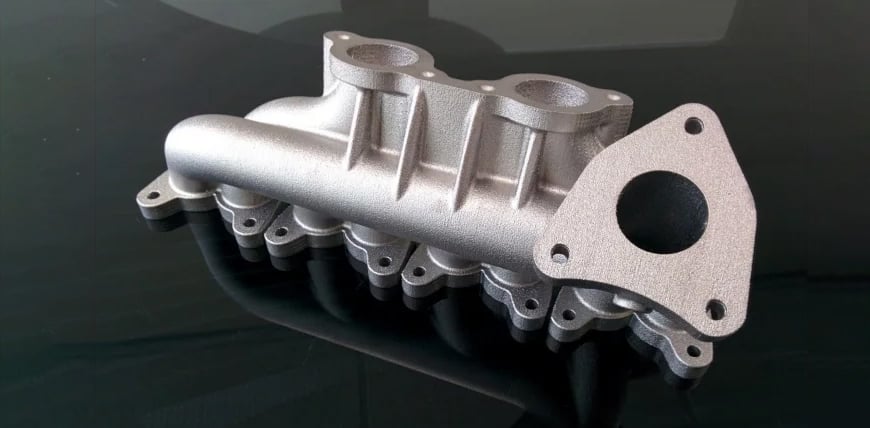
Shorter Lead Times
With in-house metal 3D printers the delivery for a single part can be just days, while a 3D printing service may take a little longer with shipping. With shorter production times, companies can offer on-demand manufacturing of parts and eliminate the need for any standing inventory.
Customization and Flexibility
3D printing allows for the customization of parts without the need for retooling, making it easier and more cost-effective to produce small batches or bespoke products, such as patient-specific surgical tools. 3D printing can produce parts with fewer mechanical complexities, leading to longer-lasting components that require less maintenance, further cutting down on operational costs.
Energy Savings
Titanium 3D printing processes, such as electron beam melting (EBM) or selective laser melting (SLM), are generally more energy-efficient than traditional machining, particularly when considering the reduced need for post-processing and material recycling efforts.
3D Printers for Titanium
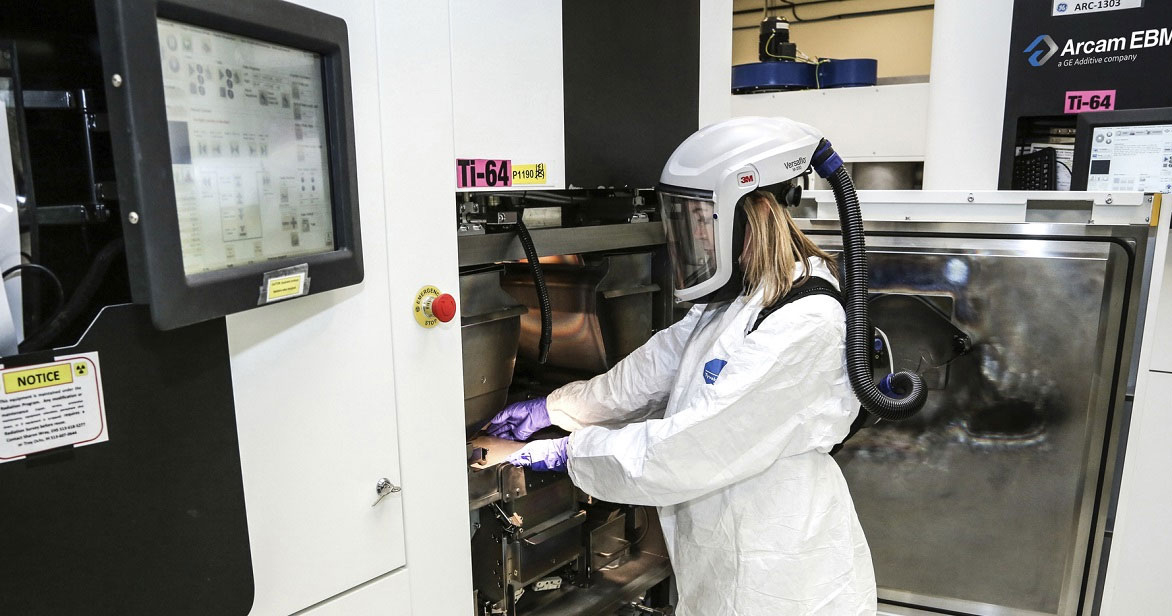
There are several metal 3D printing technologies for processing titanium-based alloys, but powder bed fusion processes – laser powder bed fusion (also called selective laser melting) and electron beam powder bed fusion (also called electron beam melting – using powdered titanium are the most common. Other additive manufacturing methods suitable for titanium include direct energy deposition (DED), rapid plasma deposition (RPD), and binder jetting.
Not all laser powder bed fusion machines can process titanium.
The current market of 3D printing systems offers a wide variety of metal 3D printers for processing different titanium-based alloys.
Laser Powder Bed Fusion (LPBF)
- 3D Systems offers three types of titanium material compatible with several of its PBF 3D printers.
- EOS offers five titanium material options that work on its four metal powder bed fusion 3D printers.
- Colibrium Additive offers titanium and titanium alloys for its M2 Series 5 and X Line 2000R line of printers.
- Nikon SLM Solutions provides three titanium alloys for its range of 3D printers.
- Velo3D has a titanium solution for its Sapphire family of 3D printers.
- Trumpf’s laser metal fusion 3D printer is designed for titanium part production.
- Renishaw metal 3D printers are popular for producing titanium parts in the medical and dental fields.
- AddUp’s FormUp350 laser metal fusion 3D printer is compatible with titanium.
Binder Jetting
- Markforged offers one titanium alloy on its PX 1000 binder jetting 3D printer.
- Desktop Metal offers titanium on its Production System printer.
Electron Beam Melting (EBM)
- Colibrium Additive offers titanium and titanium alloys for its Q10plus and Sepctra L EBM machines.
- JELO‘s JAM – 5200 EBM 3D printer is compatible with titanium.
- Chinese manufacturer QBeam has three printers in its EBM line that process titanium.
- Xi’an Sailong Metal‘s Sailong-Y150 EMB machine processes titanium.
Cold Fusion
- Spee3D has the capability to 3D print with titanium.
Fused Deposition Modeling (FDM) & Extrusion
- Desktop Metal offers a proprietary filament filled with titanium alloy for its printers using its extrusion Bound Metal Deposition technology.
- Meld Manufacturing is a unique solid-state technology specializing in larger parts.
License: The text of "6 Trusted Providers for Titanium 3D Printing Services" by All3DP Pro is licensed under a Creative Commons Attribution 4.0 International License.
